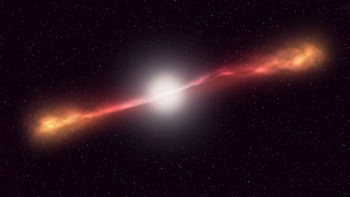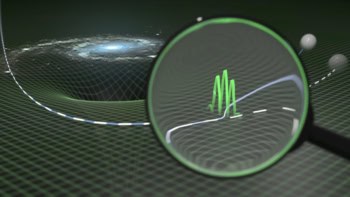Astronomers have found evidence that quasar jets - which are among the most luminous radio sources in the universe - are made of electron-positron plasmas, and not electron-proton plasmas as had been previously thought. John Wardle and colleagues from Brandeis University in Massachusetts base their claim on the amount of circularly polarized radio waves emitted by quasar 3C279. Their results may give valuable evidence on the physical mechanisms that create and accelerate quasar jets (Nature 395 457).
Quasar jets are streams of plasma that travel at near the speed of light from supermassive black holes at the centre of galaxies. The jets appear at radio wavelengths, but can also be detected in the optical, X-ray and gamma-ray regions of the spectrum. The difficulty for astronomers has been distinguishing between electrons and positrons in the jets. Both particles emit synchrotron radiation with the same wavelength and linear polarization when they travel at relativistic speeds through a magnetic field.
However, linear polarization can be converted into circular polarization in a magnetized plasma by two processes: Faraday conversion and Faraday rotation. Both processes occur in an electron-proton plasma, whereas only Faraday conversion can take place in an electron-positron plasma. By comparing the measured circular polarization with computer predictions, Wardle et al. conclude that the plasma in a quasar jet is made of electron-positron pairs.



